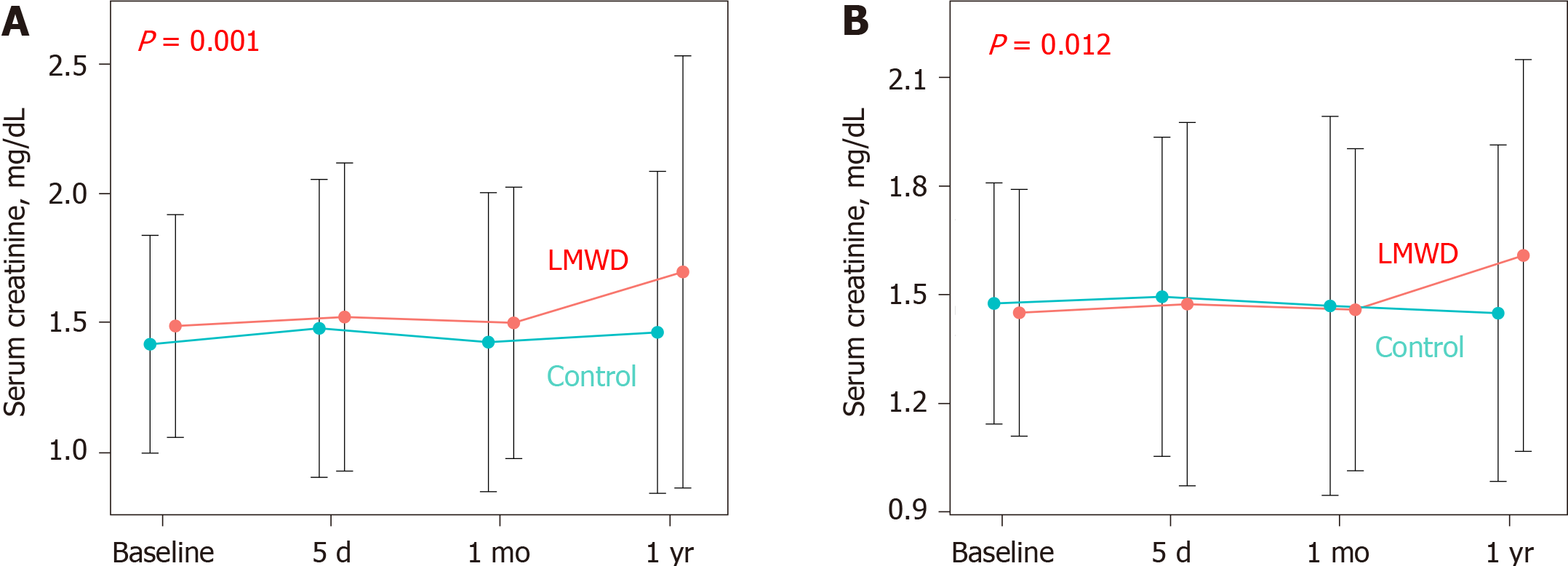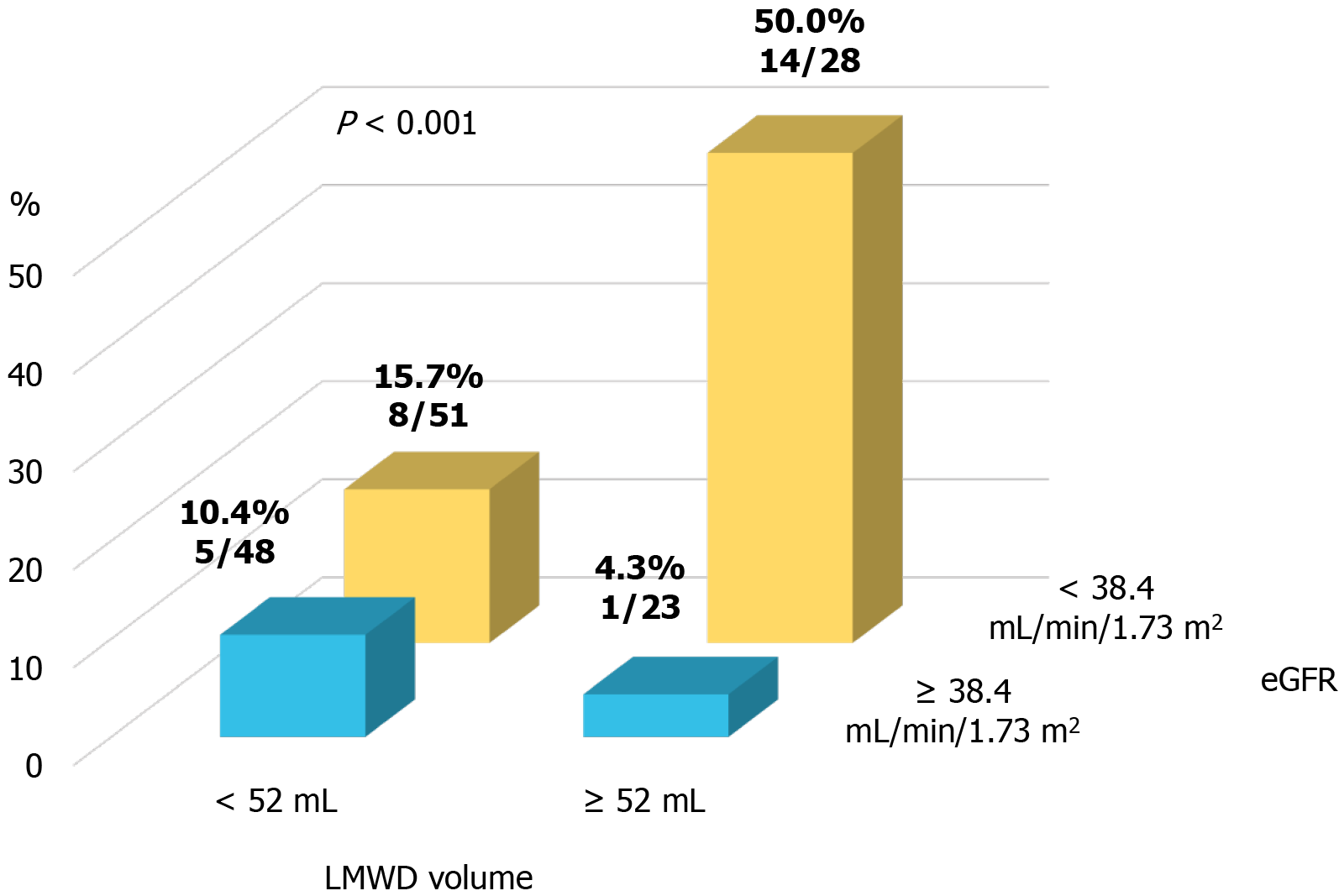Copyright
©The Author(s) 2021.
Figure 1 The patient population in this study.
CAG: Coronary angiography; eGFR: Estimated glomerular filtration rate; LMWD: Low-molecular-weight dextran; OCT: Optical coherence tomography; PCI: Percutaneous coronary intervention.
Figure 2 Serial comparison of serum creatinine levels at baseline, and within 5 d, 1 mo, and 1-year post-procedure.
A: Entire study cohort. Renal function was consistently lower in the low-molecular-weight dextran (LMWD) group than in the control group; B: Propensity score-matched cohort. The LMWD group demonstrated a trend toward worsening renal insufficiency during the 1-year follow-up compared with the control group. LMWD: Low-molecular-weight dextran.
Figure 3 Prevalence of worsening renal function stratified by the cut-off values for low-molecular-weight dextran volume and baseline estimated glomerular filtration rate level in propensity score-matched cohort.
eGFR: Estimated glomerular filtration rate; LMWD: Low-molecular-weight dextran.
- Citation: Misawa T, Sugiyama T, Kanaji Y, Hoshino M, Yamaguchi M, Hada M, Nagamine T, Nogami K, Yasui Y, Usui E, Lee T, Yonetsu T, Sasano T, Kakuta T. Low-molecular-weight dextran for optical coherence tomography may not be protective against kidney injury in patients with renal insufficiency. World J Nephrol 2021; 10(2): 8-20
- URL: https://www.wjgnet.com/2220-6124/full/v10/i2/8.htm
- DOI: https://dx.doi.org/10.5527/wjn.v10.i2.8











